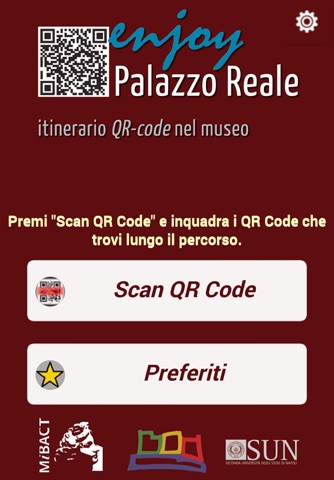
Enjoy Palazzo Reale app for iPhone and iPad
Developer: Smart Apps - Coop
First release : 17 Dec 2014
App size: 0 Bytes
Enjoy Palazzo Reale is designed to be used exclusively within the Royal Palace of Naples, by scanning the QR-code located next to the works, so as to obtain more information
With "Enjoy Palazzo Reale", you can see 60 points of interest.
The contents are completely local, you do not need an active Internet connection.
By pointing the smartphone on the appropriate QR code, you can learn more about the news
of historical and artistic works and environments, through agile cards with text links to content
multimedia that allow:
- Display of vintage images and drawings of the building;
- Reconstruction of productions of virtual environments through graphic design;
- Zoom to read names of the authors and decorative elements placed on the ceilings of the rooms;
- Comparisons between works of art;
- Reproductions of musical compositions associated with clocks and furniture;
- Animations of mechanical elements of the particular furnishings;
- Documentation of restoration.
The historic artistic path has been created
by the "Servizio Educativo della Soprintendenza B.A.P.S.A.E. di Napoli e Provincia"
Responsible for content
Annalisa Porzio
Authors of the texts, the route and multimedia content
Antonella Delli Paoli and Stefano Gei
Project realized with the collaboration of the "Cattedra di Gestione delle istituzioni culturali del Dipartimento di Economia della Seconda Università di Napoli" and with the technical support of the "Consorzio Glossa"
Initiative carried out in the framework of the European Project "Canaletto" - executive protocol on cooperation in science and tecnografica between Italy and Poland for the years 2013-2015, sponsored by the Italian Ministry of Foreign Affairs and the Ministry of Science and Education superior Polish. The project is implemented in the Royal Palace of Naples and in Wilanów Palace Museum in Warsaw, comparing their experiences of research and work.



